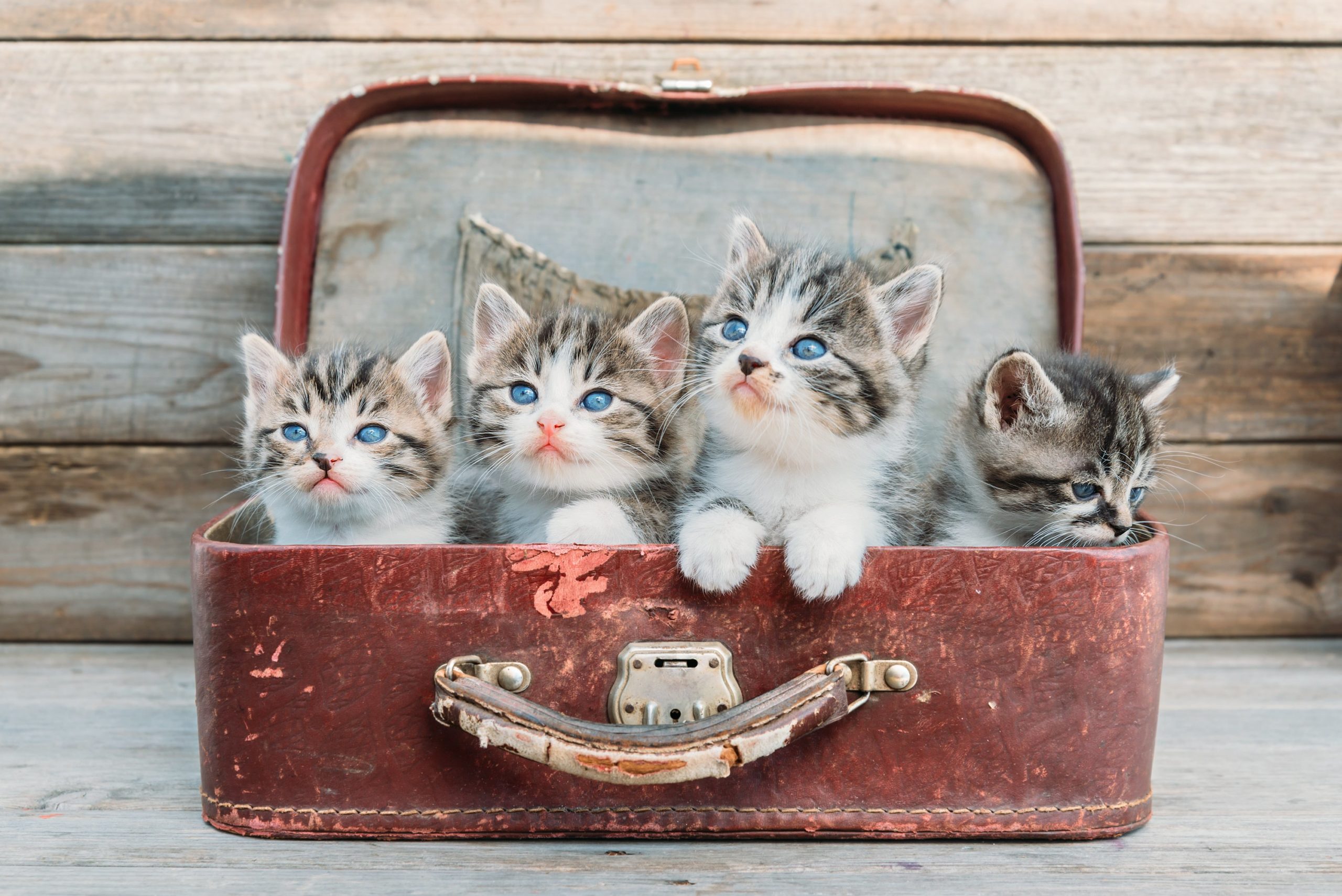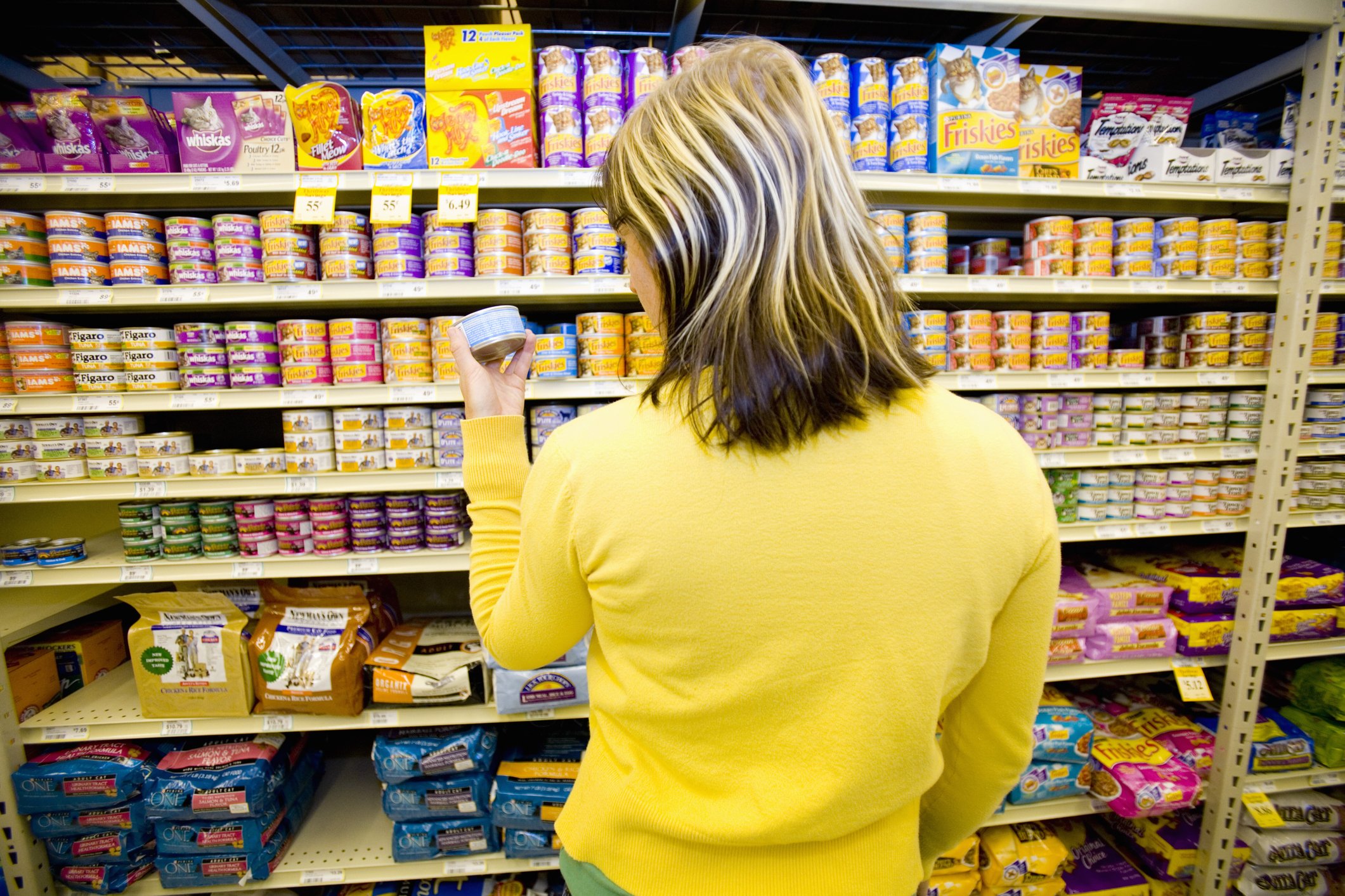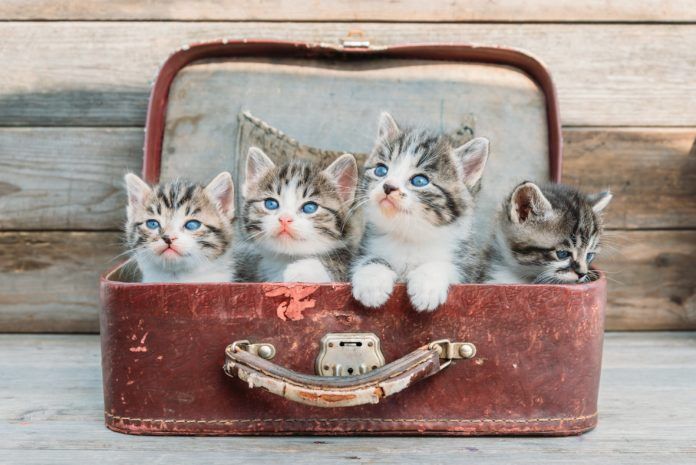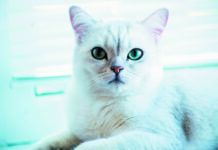© Remains/Getty Images


We love our cats and would do most anything for them. Unfortunately, our pets leave quite a paw print on the environment. From adding litter to landfills, to polluting the water with unrecyclable plastics, we may unknowingly be contributing to this paw print. By making the right choices, however, there are ways to decrease this paw print and lessen the impact on the planet. It can be as simple as choosing a different type of litter or repurposing an old suitcase into a chic cat bed.
“Environmental enrichment, or ‘Catification,’ is the art and science of creating an environment that fulfills all of your cats needs in order to keep them happy and healthy, while also taking your own design aesthetic into consideration,” explains Kate Benjamin, founder of Hauspanther and co-author with Jackson Galaxy of New York Times bestsellers Catification and Catify to Satisfy. “There are some basic things you need to provide for your cat in order to help them thrive, like climbing perches, scratching surfaces, windows to look out, toys to play with, safe places to rest or get away, and the basic resources like food, water and litter.”
The dilemma of litter and boxes
Litter and litter boxes are obviously a high priority on our list when we live with a cat companion. “If you have a cat, you have a litter box, like it or not. The best thing you can do to reduce the environmental impact of your cat’s litter routine is to use a litter that’s totally biodegradable,” says Ms. Benjamin. “I prefer non-clay litter made from grass seed, corn, wheat, paper, wood or other plant-based materials. Beware: Clay litters are usually marked as ‘natural,’ which is technically correct, but clay does not break down in the landfill as easily as other plant-based materials. Switching your litter from clay to non-clay can have a major impact on your cat’s environmental paw print.”
When choosing a litter box, look for one that is made from recycled plastic. Avoid using liners or disposable litter boxes. Daily scooping and weekly washing with mild soap and water will help keep things fresh. Another great idea is to find an old half-gallon bucket with a screw-on lid, and line that with a plastic bag saved from the store for recycling. When you scoop the cat boxes each day, deposit the soiled litter into the bucket, tie off the bag once a week and put it in the trash. This will help contain any odors and allow you to use just one plastic bag a week for disposal.
And fortunately, it’s becoming easier to clean ecologically. Accidents are going to happen in a household with pets. Be aware of labels when selecting cleaning products. Choose an enzymatic and biodegradable cleanser. Reuse old towels or washable rags for clean-up. Pet stores and even grocery stores are now carrying many brands of environmentally-friendly cleansers.
Spaces and furniture
“The greenest way to ‘Catify’ is to start with what you already have,” says Ms. Benjamin. “This just requires a little creativity and some trial and error. Start by moving some furniture around, clearing off existing surfaces and designating them for cat-only use. Be sure to add a non-slip material to any climbing shelves, like a scrap of carpet or an old yoga mat. This will prevent cats from slipping and falling. You don’t have to go out and buy anything new: Work with what you’ve got!”
Cats climb, scratch and sleep much of the day. Whether they are rambunctious kittens or older cats that prefer privacy and safety, it makes sense to get solid furniture that has multiple uses.
Ms. Benjamin suggests if you are buying, buy smart and choose items that will last. “When it comes to cat furniture, think of it as you would your own furniture. Look for designs that will stand the test of time so you aren’t constantly replacing everything. Furniture that has replaceable parts will last longer — for example, a scratcher with a replaceable scratching surface or climbing shelves with replaceable carpet pads. Look for fabrics that can withstand repeated washing. Quality furniture that’s meant to last for years will save you money, and also save the landfill.”
No matter how large or small your home is, there are ways for the environmentally-enlightened cat owner to reclaim ‘stuff’ and repurpose it into a cat paradise. Ms. Benjamin explains. “Repurposing and upcycling is fantastic for creating totally unique cat furniture, while rescuing something before it heads to the dump. I love to look around thrift stores for anything that can be turned into a cat bed, shelf or scratcher. Suitcases make great cat beds — just add a comfy cushion — and I’ve seen dresser drawers become perfect wall perches. Wrap some sisal rope around just about anything sturdy and you’ve got yourself a one-of-a-kind cat scratcher! Add a soft cushion to an old basket or a large decorative pot and you’ve got a cozy cat bed that matches your dcor, and it didn’t cost a dime. It just takes a little effort to change things up so that your cat can have what she needs.”
Toys, toys, toys!
Without cat-friendly toys, our cats would possibly spend lonely days doing very little while we work. It’s so tempting to head out and buy that fresh, shiny do-dad that fascinates not only your cat — but you! Save your money. There are many ways to create sustainable toys that don’t add to the landfill. You’re limited only by your imagination.
“There are lots of crafters making adorable cat toys from repurposed and upcycled materials like old sweaters, towels and t-shirts. Don’t let these items go to the landfill! Instead, use that scrap of fabric to make a cute catnip mouse. Since cats tear through toys fairly fast, look for cat toys made of recycled and recyclable materials like cardboard,” says Ms. Benjamin. “Cats love to sink their teeth and claws into cardboard, which is usually made from recycled material. Once the toys are trashed, simply toss them in the recycling bin.
“Another approach to toys is to get your kitty a toy that’s more durable so it will last years instead of weeks. High-quality fabrics that are natural, organic and dye-free are better for the environment and better for your cat. Materials like cork, cotton, hemp, bamboo, wood and wool come from nature and will go right back when they are used up,” stresses Ms. Benjamin.
Buy at thrift stores, host a friend-and-family exchange party or encourage a neighborhood swap. The ideas are limitless to repurposing and sharing toys and cat furniture. As we all know, a cardboard box can provide a cat with days and days of amusement!
© AsiaPix/Getty Images


Water and food bowls
Obviously, we understand that cats need fresh water at all times. Water bottles are one of the biggest polluters. If you prefer to supply your cat with bottled water, it’s a good time to invest in a good filter for your sink. Filtered tap water can solve the plastic waste issue and save money, as well.
“The safest way to serve food and water to your cat is in a non-porous surface that can be completely sanitized between meals in order to prevent harboring bacteria. Stainless steel, glass and ceramic are the best choices for safety and environmental impact because food and water dishes made from these materials will last a long time with proper care,” says Ms. Benjamin.
“There are even some new disposable food and water dishes for cats that are completely biodegradable. These are made from bamboo, sugar cane fiber or other plant material. The argument is that these bowls can be thrown away, saving the environmental impact of washing, and they will biodegrade in the landfill,” says Ms. Benjamin. “There are also washable pet food dishes being made from bamboo fiber, which is a sustainable material that may have less impact on the environment than others.”
Healthy grooming
Brushing our cats can be both healthy and therapeutic for cat and owner alike. A good set of brushes can be reused for a very, long time with proper care. All-natural shampoos should be used if a bath becomes necessary, therefore protecting our companion from petrochemicals, artificial dyes and parabens. Again, it’s important to read all labels of anything that you will be using on your cat.
When all is said and done, ‘Catifying’ to green your cat’s space can be fun and creative. Together, we can all help the Earth to create a safer living space for our family and pets. — Kim Cady
Food: A Major Part of Our Cat’s Pawprint
One of the largest parts of our feline’s paw print is found in the food she eats. Animal agriculture accounts for 15 to 35 percent of all global gas emissions. Feeding pets contributes directly to impacts on the environment, such as land, water, fossil fuel use and emissions. Dr. Cailin Heinze, a board-certified veterinary nutritionist at the Cummings School of Veterinary Medicine at Tufts University, helps to sort out these statistics to find a healthier way to lower our pet’s carbon paw print.
For example, many cat owners feel that cat food manufactured with human-grade ingredients is the best way to feed their companion. “While it sounds appealing to feed your cat ingredients that have passed all the same legal requirements as the food on your table, doing so doesn’t actually ensure that the diet is healthier and more nutritious, although it does ensure that it is more expensive,” explains Dr. Heinze. “From an environmental perspective, feeding your cat the same kinds of meat that you probably eat — such as unblemished muscle meats rather than ‘by-product’ or meat meals — would increase your cat’s environmental footprint because now we have to raise enough animals to provide muscle meat for you and your cat. And your cat will likely eat a lot more meat than you will, relative to body weight, because they have higher protein needs.
“The issue is that most of the weight of a pig or cow is not just lean muscle meat — organs are a big part of the animal, as are other types of meat that aren’t typically sold in grocery stores. Using these parts of the animal that people (at least in the U.S.) usually don’t eat to feed pets is more sustainable — it allows us to use more of the animal. Organ meats and other odds-and-ends that aren’t beautiful steaks or chops are nutritious foods that might otherwise be wasted. Yet, mostly because of product marketing, many pet owners don’t want to feed organ meats or other ‘by-products’to their pets, despite their nutritional benefits.”
As you may know, cats are obligate carnivores, which means your cat must gain much of its protein from meat. “Cats should be fed at least some meat protein in their diet, and they do need a higher protein diet overall, relative to people and dogs. There are some nutrients that may be available synthetically or in less bioavailable plant forms, but are best obtained from animal sources, such as arachidonic acid and vitamin D3. It is a misconception to think that cats must eat only animal protein, however,” says Dr. Heinze. “As long as attention is paid to digestibility, total protein amount and the amount and ratios of amino acids (the building blocks of protein), cats can thrive on a combination of meat and plant protein, which can reduce their environmental footprint relative to eating all of their protein from meat.”
Obesity in cats has always been unhealthy, and it contributes just that much more to their overall food paw print. “If your cat is obese, she is being fed too much food,” explains Dr. Heinze. “Feeding less food will not only make your cat healthier as she loses weight, but will also reduce the amount of meat that your cat eats overall: less food = less animal protein overall.”
However, Dr. Heinze cautions: “Before you start your cat on a weight loss plan, it’s important to talk with your vet to figure out how much to reduce the food and to make sure that the diet you are feeding will still have enough protein and other nutrients to promote health while reducing calories.”




